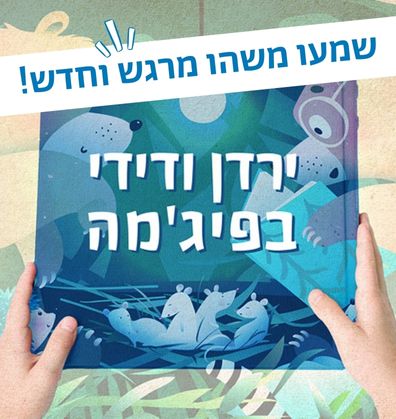סְּפָרִים
Book-Related Family Activities
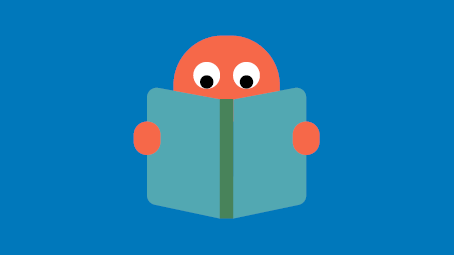
Family reading advice – Books everywhere
Like many toddlers, Berale also asks Grandma – “What are we going to do now?”. Among the surprises Grandma keeps in her basket is a book that they can read whenever they want. A book is a world unto itself that can be taken anywhere quite easily. You can also keep a book in your bag, and enjoy it while waiting for a doctor’s appointment, relaxing in the park, or taking a long car ride.

Discussion – Special times with loved ones
You can discuss your toddler’s relationship with Grandpa, Grandma, or other significant family members and ask – What do you enjoy doing together? Are there any special activities that you only do with your grandparents or uncles and aunts? Are there any special items that only they have at home?

A made-up story
Grandma’s stories make Berale laugh because they are made-up, and unusual things can happen in our imaginations. Try making up your own story, like “The Hippo that Fell into a Soup Bowl”, “The Lion Who Was Afraid of Being Left Alone at Night”, or any other idea that comes to mind. You can start with an object you see around you, and take it from there.
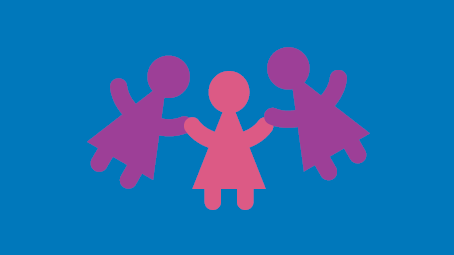
Grandma baked a cake…
Do you know the fingerplay that accompanies the nursery rhyme “Round and Round the Garden”? Or the Israeli version “Savta Bishla Dasya” (“Grandma made some porridge”)? You can play a similar game by bending your fingers inwards and leaving your thumb out to create a ‘snail’. Your toddler’s upturned palm can be the bowl. Now say: “Grandma and Berale baked a cake. They added flour, they added sugar, they added eggs…” while touching your toddler’s upturned palm with your thumb as you name each ingredient. You can take turns being Berale and the mixing bowl.

Reading-assisting touch
Toddlers need physical contact. That is why you should sit close to one another while reading, hug, touch, and look into each other’s eyes every once in a while. That way your toddlers will experience story time as a warm and relaxing activity that makes them feel loved and safe.

Tickles and games
You can ask your toddlers – do you like tickling games? Which of the games that we play together do you enjoy? What would you have liked us to play? In relation to the mother’s telephone call in this book, you can also ask – how did Gan-Yah feel when her mother went to answer her phone? How do you feel when you have to wait?
There’s a hill in this house
You can play the same game they play in the book: Your toddler or another family member can hide under a blanket and become a hill. You can tickle the hill, feel it and search – where’s the hill’s foot? Where is its head?
*Some children are hypersensitive to touch or tickles, and therefore, it is important to remind players before the game that one can say “stop” at any point, just like they do in the book.

Moving together
There are many body movements in this book. You too can jump, dance, roll or lift your legs up in the air just like the hill does. You can look at the illustrations and copy Gan-Yah’s movements too.

For more ideas for activities, check out our Instagram page and discover more surprises.

With an open heart
Following Yonatan, you can discuss and share: What can be the meaning of the phrase: “to open up your heart”? Is there an image or item that reminds you of loved ones, and make you feel like your heart is opening up and your feelings are welling up?
QR code
Would you like to listen to The Key to My Heart? Scan the code and you can listen to this book together
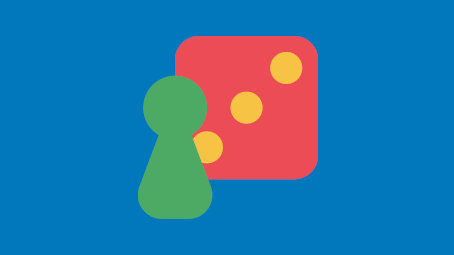
Where have I been and what have I been up to?
Thanks to the lost keys, Yonatan gets a glimpse into his father’s daily routine. And what did you do today? You can play charades, miming to one another a place you have visited or something you have done. Take turns acting out a place or action, while the rest of your family tries to guess where you have been and what you have been up to.

Details in the illustrations
Yossi Abulafia’s illustrations are full of details. You may want to stop and look: Which animals can you find in the illustrations? Do they appear more than once? What are the people on the street up to? And now, look at the illustrations again: Have you discovered anything that you did not seen the first time?
Playing Hide and Seek
Let’s play hide and seek! We can hide our fingers in the palm of our hands, cover our nose and reveal it, hole up under a blanket, conceal ourselves behind the couch, or hide a toy behind our backs.
Who wants to go first?
Seek Out the Cat
Meow! The grey kitten has joined our game of hide and seek. You can search for it every illustration, just be careful not to step on its tail…
Some Reading Advice: How to Turn Books into Friends?
Reading from an early age plays a key role in toddler development; however, like anything new, the question is – how do we find the way? We suggest getting acquainted slowly and gradually; let the toddler connect to the book in their own way: Touching, opening and closing, and even “tasting” it with their mouths. Afterwards, you can read: A little each day, patiently and with pleasure. At first you could even read a single page, introducing it and getting accustomed to it, and hey presto – you have turned a book into a friend!
Sifriyat Pijama an opportunity to read together, at any age
No more than a box
“A house is merely a box to live in…” Please scan the QR code and sing along with the song written and composed by Datia Ben Dor.
We can build too
You can also build a house out of a box. All you need is a large cardboard box, some free time, and a good mood. Now you can invite friends over to spend time with you in the house you have built. If you can only find a small box, don’t worry, you can turn it into a dollhouse.
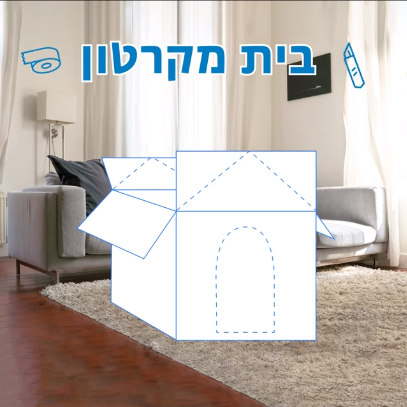
Playing a game of ‘Hide and seek’
Where is the best place to hide? Just like Mom and Yasmin, you too can play hide and seek, with toddlers hiding and parents looking for them. Were you able to find them? Then how about starting another round and inviting the rest of your family to join you?
שרים ורוקדים בעקבות הסיפור
“בַּיִת זֶה בְּסַךְ-הַכֹּל קֻפְסָה…” – צפו בסרטון שמציע לרקוד ולשיר יחד.
A piece of advice when reading to toddlers
We recommend reading the book alone first, before reading it as a family. Prior familiarity with the book helps to read it seamlessly later, at a pace suitable for toddlers. Enjoy reading this book!
A discussion on who can help
We can all help others, even toddlers. You may want to ask your toddlers how they can help others, or tell them that they are helping when it happens: “Remember when you helped me set the table?” “Look at you helping me put away the toys!”
Listening to the story
Would you like to listen to the book Noni and his Mom Walk Homefrom Kindergarten? Please scan the QR code to find a recording of this book. You could listen to it while traveling, playing, or sitting together while turning the pages of the book.
A story in illustrations
The illustrations are part of the story, and using them, toddlers identify and recognize the plot and some of its details. You may enjoy looking at the illustrations together, and searching for the items that Nomi gives his mother: ‘Where do you see an illustration of a bag?’ and ‘Where can you find an illustration of a coat?’
Playing a game of ‘An items tower’
Inspired by the items piling on top of mom in this book, you may want to take turns building a tower out of various items: Very carefully, one on top of the other, you can place building blocks, toys, hats, bags, and anything else you might want to add.
A little advice for family reading
To make family reading enjoyable, and encourage children to read, we should choose books to which children relate and explore topics in which they are interested. Some prefer a piece of fiction, while others would want to read a story that “once was”. Whatever their favorite book may be, it would encourage them to enjoy books, while helping them to develop their imagination and creativity.
A discussion on belongings and memories
You too could look for items that remind you of past experiences: A family photo, gift you have received, or item associated with an experience you have had. Take turns introducing the object of your choice and sharing a memory relating to it.
Listening to the story
What does Grandpa sound like? Does the machine make sounds? By scanning the QR code you too can listen to the story together or separately.
Building something
Are you interested in making a machine of your own? You can gather some boxes, fabrics, crates and old toys to build your very own machine. You can plan what it would do and look like together, or simply build it and discover its attributes as you go along.
Illustrations – Where are the machines?
Many of the illustrations in this book depict machines. Perhaps you would enjoy leafing through them and finding illustrations of machines and machine parts – Can you tell what each of them does? Perhaps you could be inspired by the part you found to invent a new machine, and imagine what it is capable of doing.
Pinterest
Arts & crafts, songs and other activities are available on the Sifriyat Pijama Pinterest page
A discussion on stories that “once were”
Following this book, you could also raise memories and tell stories that “once were” – a childhood story of yours, parents, or one told by Grandma or Grandpa about the old days.
Listening to the story
You could listen to the story together or separately; all you have to do is scan the QR code and… let the magic begin!
Suitable for families of Olim too.
Look how we have grown!
The tree grew, as did Rebecca. And how about you? Perhaps you would enjoy watching videos and looking at photographs to see how both children and parents have grown and changed. You could even discuss the kinds of actions that your children were able or unable to do in the past.
Orange sponge cake
Would you like to bake a cake? All you need are two eggs, one third of a cup of sugar, one third of a cup of oil, half a cup of fresh orange juice, a cup of flour (or substitute) and one teaspoon of baking powder. You could also add the grated zest of half an orange.
Mix all the ingredients in order and place in an oven preheated to 180 degrees Celsius. Bon Appetit!
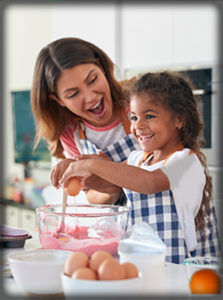
We can help too!
What can toddlers do at home? Many things! They can put glasses on the dining table, sweep with a small broom, feed the pets, and… offer cookies. It is worthwhile to talk and show what the toddler is helping with at home, and what else they want and can participate in.
Who is in the family?
The child in the story hands out cookies to other family members: grandmother, uncle, sister, cousin. Who are your family members? You can talk about family members, say their names and thier roles, such as: “Grandma Braha,” “Uncle Baruch,” use family photo, and use family photos.
Let’s make some refreshments together!
You too can prepare refreshments together, such as chocolate balls, a plate of fruit, or a sliced cucumber. You can prepare “pretend” refreshments using play dough and offer to the dolls at home.
Game: Grandma had cookies…
Do you know the game “Grandma made porridge”? “The child had cookies” can be played in a similar way, in which the toddler opens her, or his hand, and the parent begins to count: “The little boy/girl had cookies and gave one to Grandma (holding the thumb), and one to Uncle (holding the forefinger) etc. And so you count the fingers by allocating a family member to each one. Who will you give the last cookie to?
Getting [into] the picture
Would you like to go into one of the illustrations in the book? You could choose to be a guest at the home of one of the families described in this story, and imagine how it would feel to be next to the whale, or in the kangaroo’s pouch. What would you want to happen when you meet some of the characters depicted in the illustrations?
Guessing the animals
One family member can make the sound of an animal, or draw a picture of it, imitate it, or give some other kind of clue about it – and the rest can try to guess which animal they were hinting at!
Sound – imitate the sound made by this animal
Pantomime – act the animal out, walk like it or try to look like it
Picture – show or draw a small part of the animal: a tail, wing or foot.
Clue – describe some detail about the animal: where it lives, what it looks like, or the sound it makes.
Couldn’t guess? Help each other by providing additional clues.
Discussing – Why? How? What?
How did Guy feel when he destroyed Omer’s circus? And how did Omer feel when he discovered what had happened? Were you ever in a situation where you or someone you cared about ruined something for the other? How did you feel, and what did you do? Were you able to fix it? Perhaps you could discuss the feelings that emerge when something is ruined, and when you discover it can be fixed.
Toy Improvement – Time to fix some toys
Is one of your games broken? Has the paint peeled off? Perhaps a nail has come loose? Then it’s time to fix it! Make a list of all the things that need to be repaired around the house, then pick an item at a time, and fix it. You could even make new things out of old ones. An old sock can become a puppet! An old box can be painted and decorated with colorful paper and stickers…
A home circus
Circuses make children’s and adults’ imaginations run wild, and can be the setting for many fascinating occurrences. You may enjoy building your own circus at home, and acting the story out using the appropriate outfits and accessories. You could even be inspired enough to write a brand-new script about what goes on in a colorful circus.
Fixing yourself some arts & crafts
Torn pieces of paper can be turned into a piece of art! Color some pages in various colors, then tear them up into small pieces. You could also use newspaper cuttings or scrap paper. Next, make a painting together on a blank piece of paper by sticking the colorful, torn pieces onto it, and creating a mosaic!
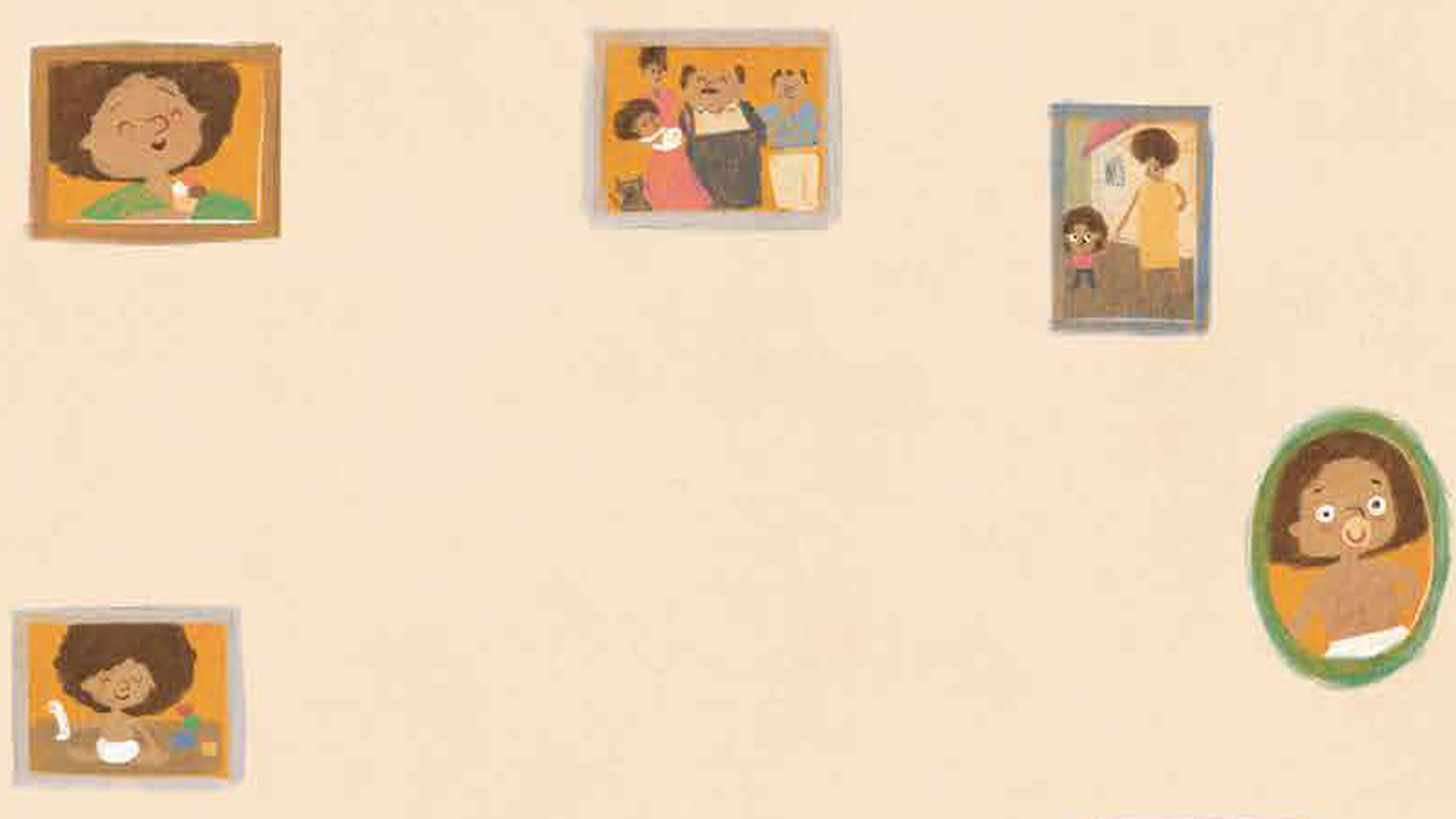
Discussing – Names and stories
Who likes their name? What is the story behind your family members’ names? Are there other family members who have the same name? or strange names? Are you named after anyone? You may want to do some research among your extended family. Who knows the stories you will uncover…

Observing – Where is Arie?
Shahar Kober’s illustrations invite us to follow Arie, and join him as he enters his family story. Can you find Arie in the different pages of the “Book of Aries”?
You may enjoy looking at old family photos of events that happened “once upon a time”: look through the pages of a photo album together, listen to the stories behind the events depicted in them, and choose one photograph you wish you could enter.

Doing some arts & crafts – A family book
How about creating your own family book, an album that will tell your story and that of your children, just like the Book of Aries in this story. Take a blank notebook, and collect stories from your grandparents, aunts, and uncles. Write down their memories from the time you were babies, funny words you said, or some special behavior. We recommend collecting such stories about both parents and children in your family. You should put in old photos and mementos from kindergarten, daycare, and the time when you were tiny babies.
Proposed Family Activities:
- You may want to snuggle up and look through the book together. You could follow Tani’s facial expressions and ask your child: How, do you think, Tani felt when his sister chose to give Mama a flower?
- We suggest pausing at the page on which Tani announces that he, too, needs a box for his gift, and asking your child: what will Tani’s gift for his mother be, do you think? What gift would you like your child to prepare for you?
- You could act the story out using puppets. Together, you can imagine what the puppets will do with their mother at the end of the play.
- Perhaps you could play a game called “what’s the gift?”. Each player in turn picks a toy or small object and puts it in a box. The other players try to guess what is in the box by asking questions and receiving clues. For example: Is the gift an animal? Is it something yummy? Is it made of wood?
Were you able to guess which gifts were hiding in the boxes?
- You may want to tell your child how you honored or are currently honoring your own parents, and remind one another of the ways in which your child honors you. Together you can think of an older family member you could honor – perhaps by giving them a flower or hug, or surprising them with a phone call.
- How about choosing a box and decorating it with stickers, drawings, and ribbons? Perhaps you could decide together to whom you will now give it.
Look Together
You may want to look at the illustrations together, and compare Gal’s home and kindergarten to the area in which Grandpa Raphael lived so many years ago. Together you may enjoy imagining what your life would have been like had you lived in another place, at another time. If you happen to have old pictures documenting the roots of your own family, you could show them to your child, and try to identify your family members together, as well as the places in which they lived back then, and now.
The Meaning of My Name
Does your child know why they were so named? Having read this book together, you may want to share the meaning of their name with them, and the story leading up to choosing it for them. You could also tell them what made your parents so name you.
Our Village Todgha
Do you know the tune to the song Our Village Todgha by Yehoshua Sobol performed by music group Habreira Hativ’it (The Natural Selection)? Perhaps you would like to sing it together with your child
Remember Together
Just like Gal, many children enjoy listening to stories about the past. Do you remember any festive occasion from your days in kindergarten and school? Perhaps you could share your learning-related childhood memories and family traditions with your child.
Fun with letters
Young children learn from enjoyable activities, such as licking honey-dripping letters. There are many ways of teaching the alphabet: you could put names and words together from various materials, cut out letters from newspapers, identify familiar letters that appear on signs and packages, play word games, and so on. The most important thing is to have fun while you learn!
Have a Great Summer!
Sweet Aleph-Bet is the last book on the PJ Library books list for this year. We hope you have enjoyed the books, and wish you an enjoyable summer, and a smooth beginning in your new kindergarten or school!
A recipe for sweet Aleph-Bet letters
Ingredients:
2/3 cup of soft butter
2/3 cup of sugar
1 egg
1 teaspoon of vanilla extract
2 cups of flour
1 teaspoon of baking powder
½ teaspoon of salt
Method:
- Whisk the butter and sugar until you get a somewhat fluffy batter. Fold in the egg and vanilla extract.
- In a separate bowl, mix the flour, baking powder and salt.
- Combine the two mixtures and knead until dough is crumbly. Knead crumbs into a ball, cover it with saran wrap, and keep refrigerated for an hour.
- Pre-heat oven to medium heat (180°C).
- Flour your worktop and use a rolling pin to flatten your doughball. Use letter-shaped cookie cutters to cut cookies out of the dough.
- Place the cookies on a baking pan, and bake in the oven for 10 to 12 minutes, until edges turn golden.
Did you know where the name Sabich originated before reading this story?
What do you know about your own family members’ names? Are they biblical? Are any of you named after a relative? Perhaps, like Sabba Sabich, your name or your child’s comes from a foreign language? You may want to discuss your names, their origin and meaning together, and tell your child what made you choose their name for them. Perhaps your child would enjoy making a decorated sign with their name on it, and hang it on their bedroom door.
Sabba Sabich came to Israel from Iraq. Where did your family come from?
How long has your family been living in Israel? Which country did it come from? Perhaps you could make a world map, and draw arrows on it denoting the path travelled by your family until their arrival in Israel. You may wish to share your own immigration stories with your child, or those of their grandparents. What did you like about the country you came from? What do you like about Israel? What sort of hardships and successes did you experience? Has any member of your family changed their name upon arrival in Israel?
Sabba Sabich says each community brought with it "a language, songs, names, and traditions"
You may want to teach your child a few words in the language spoken by their grandparents. Together you could recollect special customs and songs, which you could teach and sing with your child. They could also read this book with older members of the family, such as uncles, aunts, or grandparents. Perhaps by doing so they will be told more family stories they had not heard before.
Do you make Sabich for breakfast?
Pizza, falafel, kreplach, Jahnun... Which dishes are typical of your community? You may enjoy preparing a special meal together consisting of dishes typical to your family’s place of origin. You could teach your child how to make traditional food, and even create a family cookbook.
Keren and Or in making Sabich together!
Ingredients for home-made Sabich
- Hard-boiled eggs
- Sliced, fried eggplant
- Finely chopped salad
- Pitta bread
- Hot sauce (Schug), Amchur (Amba) (optional)
- Hummus
- Tahini
Method:
Peel the eggs (ask your child to look for the description in the book!), place one pitta bread on a plate and put hummus on it, with or without hot sauce (schug) or amchur (amba). Add the eggplant, sliced egg, and salad.
Season with salt and pepper, and put a spoonful of tahini on top.
Bon Appetit!
Enjoy reading and discussing the book together!
Family Activities
- Duvshan and Mummy do all kinds of things together. You can go over the illustrations in the book with your children and with their help, tell the story in your own words. Invite your children to “read aloud” the story from the point of view of little Duvshan, and you can tell the same story from the perspective of Mummy Bear. At the end, you may ask your children to choose one joint activity that is described in the book, and do it (or a similar activity) together.
- Honoring one’s parents: The story presents a wonderful opportunity to share your own experience with your parents, by recalling ways in which you honor or honored your parents. Be sure to let your children know how they honor you too!
- Duvshan helps Mummy with gardening work and in the kitchen. Your children can also honor you and help out around the house. They can help set the table, match socks from the laundry, or help dust the furniture. For very young children this is a wonderful opportunity to feel needed and learn that they are capable of helping out with household chores.
- Like Duvshan, many children like to prepare little “surprises” for their parents and show their independence. They can get dressed by themselves, wash themselves, pick up and organize their toys. And just like Duvshan’s Mummy, you too can marvel at your children’s desire to help you – and in return prepare a small surprise for them!
- A “patience clock”: We all know how difficult it can be for young children to be patient. Setting an alarm clock or an hourglass can help your child know when the “being patient” time has ended. If you plan what you’ll do together when the time is over, it might help the time pass even quicker.
- Many young children have a hard time thinking up ways of being on their own. For such instances you might want to prepare an “I Can Do It All By Myself” album together with your children, including a collection of drawings that describe ideas for independent activities. Each page can contain a different activity. Your child can color the pictures and you can add short sentences such as “I can draw”, “I can cut”, “I can water plants”, etc. Looking through the album will help the children choose an activity to carry out on their own while they’re waiting for you, and afterwards, just like Mummy Bear, you can say: “Oh, my little one, you are so talented!”

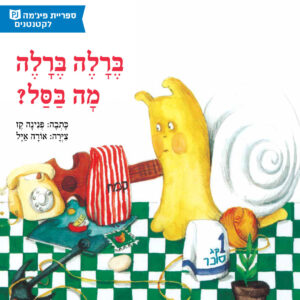 Berale Berale What’s in the Basket?
Berale Berale What’s in the Basket? 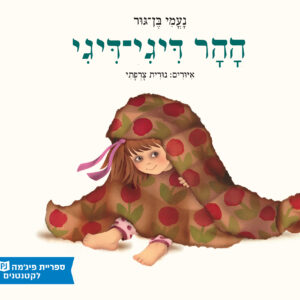 The Hill Tickle-Tickle
The Hill Tickle-Tickle 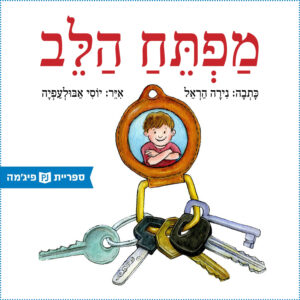 The Key to My Heart
The Key to My Heart 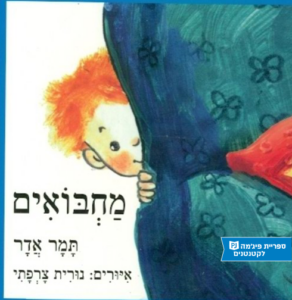 Hide & Seek
Hide & Seek 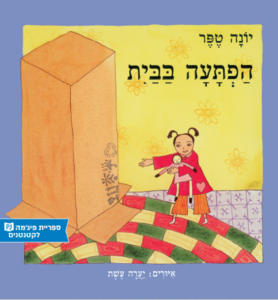 Surprise at Home
Surprise at Home 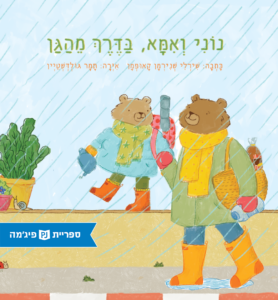 Noni and his Mom Walk Home from Kindergarten
Noni and his Mom Walk Home from Kindergarten 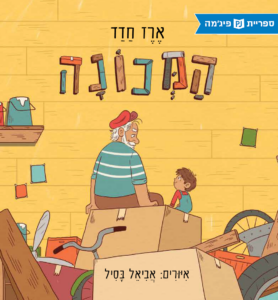 The Machine
The Machine 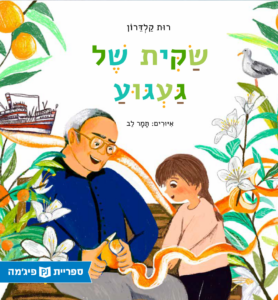 A Bag of Longing
A Bag of Longing 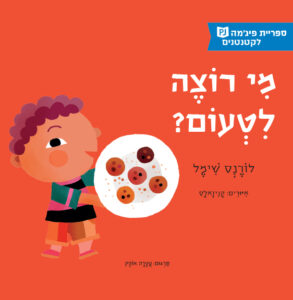 Who wants to taste?
Who wants to taste? 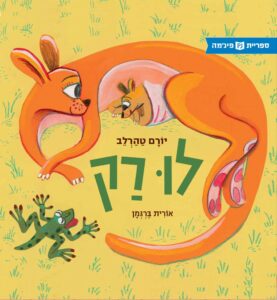 If Only
If Only 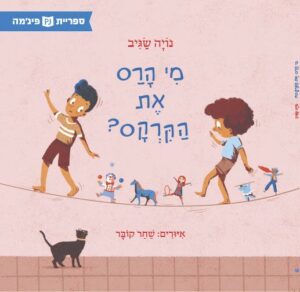 Who Destroyed the Circus?
Who Destroyed the Circus? 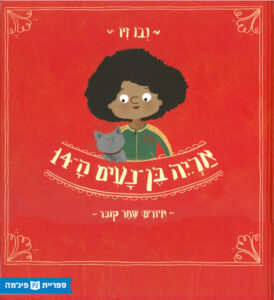 Arie Ben Naim XXIV
Arie Ben Naim XXIV 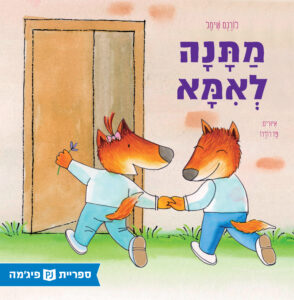 A Gift for Mama
A Gift for Mama 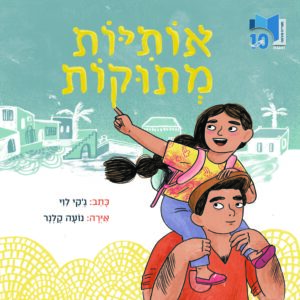 Sweet Aleph-Bet
Sweet Aleph-Bet 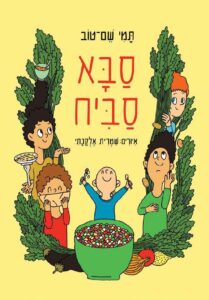 Sabba Sabich
Sabba Sabich 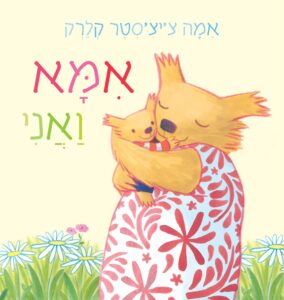 Mummy and Me
Mummy and Me 






